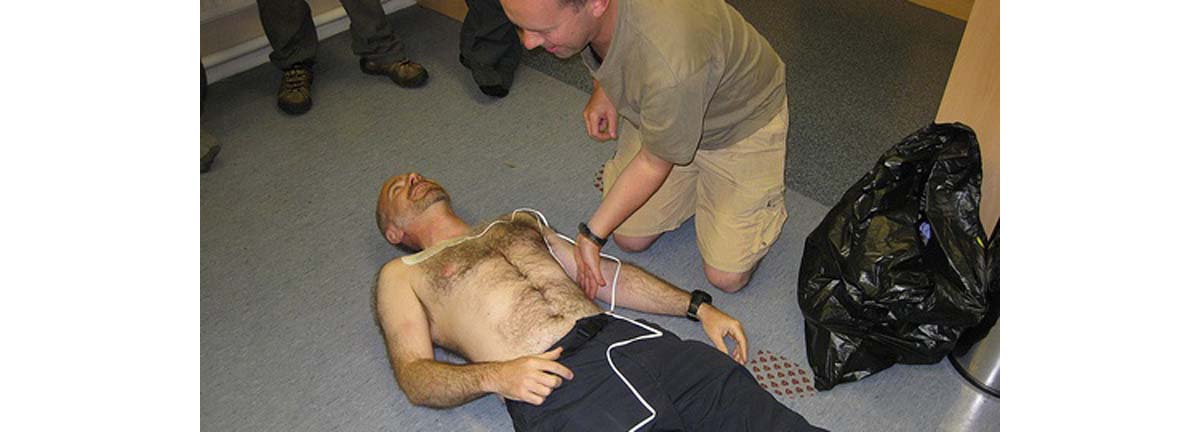Table of Contents
It took a lot to bring me back from sudden death three times in the same day. Without CPR, heart stimulant drugs, electrical shock from a defibrillator, and finally a procedure that has to be performed by a heart surgeon, I would not have made it. However, mine was an extreme case. Not everyone needs the maximum level of intervention to survive sudden death.

CPR Works, But Not Very Well
The best-known treatment for sudden death is cardiopulmonary resuscitation, also known as CPR. The plus side of CPR is that almost anyone can learn how to do it. The down side of CPR is that, most of the time, it does not work.
In Europe, about 21% of sudden death victims who are given CPR by bystanders survive with brain function intact. In the United States, according to a study published in the Journal of the American College of Cardiology, only about 18% of sudden death victims given traditional CPR (chest compressions alternating with breaths blown into the mouth) survive to be released from the hospital. A relatively new approach to CPR, however, nearly doubles the survival rate.
Cardiocerebral Resuscitation Doubles Survival Rate
The newer approach to treating people whose hearts have stopped involves giving compressions but not stopping to breathe into the mouth. This way already-oxygenated blood keeps flowing into the brain, but there is no risk that too much pressure will be applied to the chest, stopping the flow of blood from the heart. (The older style CPR probably killed more people than it saved.) The surprising result of new approach is that 34%, about twice as many, live to be released from the hospital.
There is an easy way to know whether the procedure worked. If the patient gasps for air, oxygenated blood is finding its way to the brain, and brain death has been averted.
Resuscitation without blowing into the mouth has become the standard of manual first aid for people of all ages, even infants. Advances in electronics, however, increase the survival rate even more.
Automatic Electronic Defibrillators Save Lives
An even more reliable emergency treatment for cardiac arrest is the automatic electronic defibrillator, or AED. These portable EKG and shock machines automatically detect a "shockable rhythm" in the heart that indicates that the lower pumping chambers of the heart can be restarted. If there is a shockable rhythm, the machine gives a series of step by step instructions for bystanders to use the device to restart the heart.
The latest statistics indicate that 74% of people treated with an automatic electronic defibrillator, designed to be used by people who do not have medical training, survive their cardiac arrest and return to normal life, provided the machine is used in the first three minutes. If the machine is only used three minutes or more after the heart stops beating, then the survival rate is lowered to 49%. Treatment with AED, however, is far more likely to be successful than treatment with CPR or CCR alone.
And some people will still only survive if given surgical interventions. It's all about being in the right place at the right time.
You Might Make the Difference in Saving Someone's Life
The important thing to remember, however, is that you might be the critical factor in providing care in cardiac arrest. You don't have to give mouth to mouth resuscitation to save a life. In fact, it's better if you don't. You just have to have taken a two- or three-hour course in giving the new CCR.
And if you have access to an AED, you only need to be brave enough to follow instructions.
Don't stop there. Call an ambulance. Get the victim of cardiac arrest into a hospital as quickly as possible.
There's not a lot you can do to have your cardiac arrest in the right place, unless, like me, you had a sense of impending doom and you nagged and pestered your doctor to let you into the hospital. But there is a great deal you and your community can do to help cardiac arrest victims survive even outside the hospital if you take time to prepare.
- Ewy GA. The Cardiocerebral Resuscitation protocol for treatment of out-of-hospital primary cardiac arrest. Scand J Trauma Resusc Emerg Med. 2012 Sept 15. 20:65
- Ewy GA, Sanders AB. Alternative Approach to Improving Survival of Patients with Out-of-Hospital Primary Cardiac Arrest. J Am Coll Cardiol. 2012 Nov 17.
- Photo courtesy of ozarksredcross on Flickr: www.flickr.com/photos/ozarksredcross/4352081361
- Photo courtesy of gerald-davison on Flickr: www.flickr.com/photos/gerald-davison/3725402634

